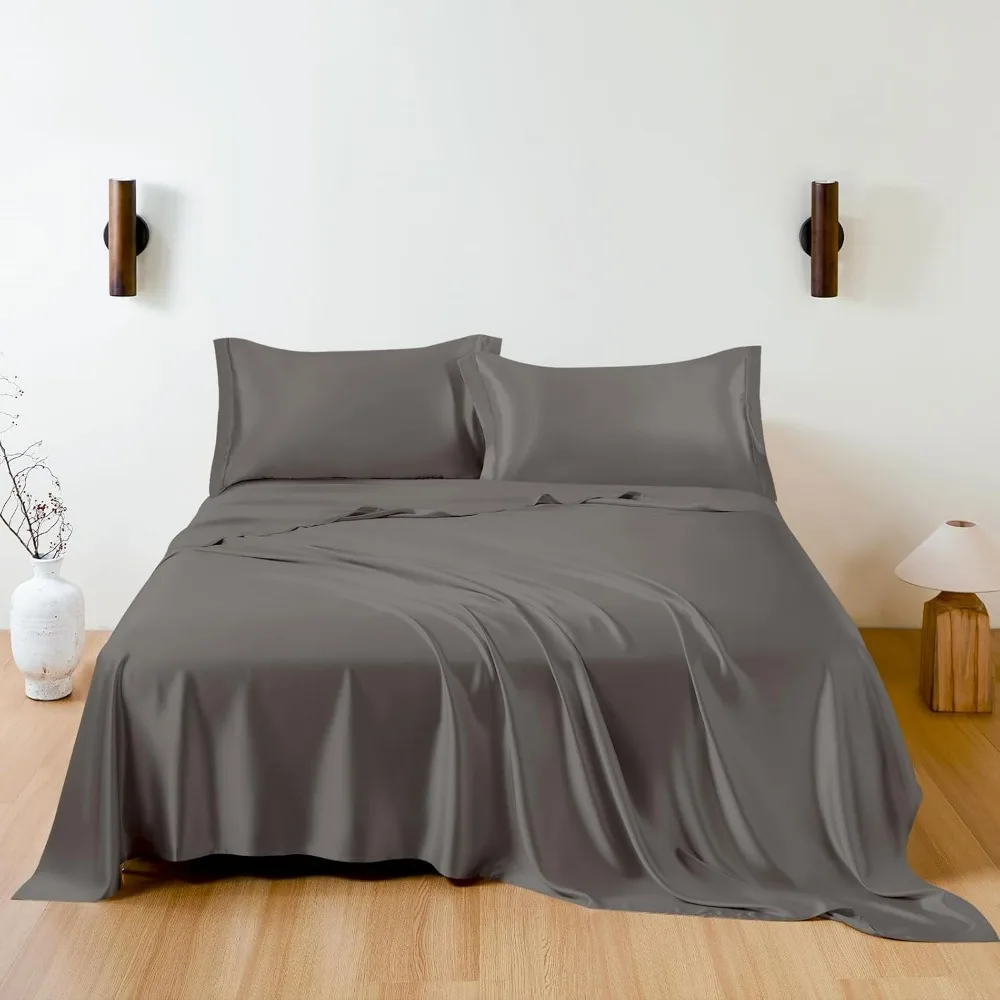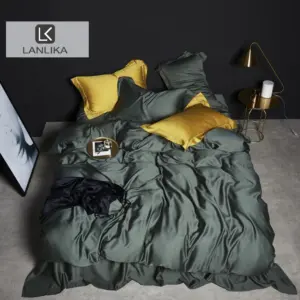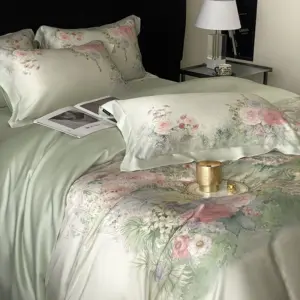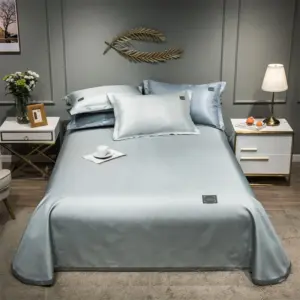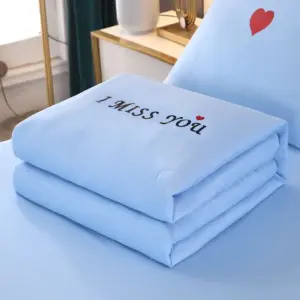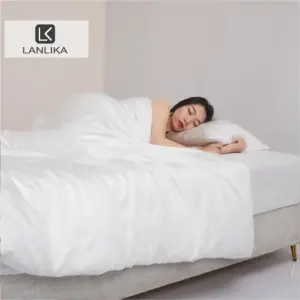1. Introduction: The Luxury and Environmental Impact of Silk Production
Silk has long been treasured as one of nature’s most luxurious gifts. With its incomparable softness, natural sheen, and remarkable strength, this premium fiber has adorned royalty and enriched bedrooms for centuries. The global silk market continues to expand, now exceeding $15 billion annually, with growing consumer interest in where their textiles come from and how they’re produced.
As awareness about sustainability rises, the environmental footprint of conventional silk production has come under scrutiny. The journey from silkworm to sumptuous fabric traditionally involves resource-intensive processes that raise both ecological and ethical questions. Water usage, chemical treatments, and the fate of the silkworms themselves all factor into silk’s true environmental cost.
Fortunately, the textile industry is experiencing a renaissance of eco-conscious innovation. From traditional methods refined with sustainable principles to groundbreaking alternatives that challenge our very definition of silk, the options for environmentally mindful consumers are expanding rapidly.
The amazing benefits of mulberry silk sheets that make this fabric so desirable can now be enjoyed with greater awareness of how our choices impact the planet. This shift toward sustainability preserves silk’s legacy of luxury while addressing modern environmental concerns.
2. Environmental Challenges of Conventional Silk Production
Traditional silk production, while creating a beautiful natural product, carries a significant environmental burden that often goes unnoticed behind its luxurious image. Understanding these impacts helps consumers make informed choices about their textile purchases.
The environmental footprint of conventional silk production includes:
Water intensity: Mulberry cultivation for silkworm food requires substantial irrigation—approximately 1,500 gallons of water to produce just one pound of raw silk. Additional water is needed for the degumming, dyeing, and finishing processes.
Energy consumption: Climate-controlled environments for silkworm rearing demand consistent temperatures between 20-28°C (68-82°F), requiring heating or cooling systems that consume significant energy, particularly in non-temperate regions.
Chemical pollution: Conventional silk processing typically uses synthetic chemicals for degumming (removing sericin, the sticky protein coating silk fibers), bleaching, and dyeing. These chemicals often end up in waterways, affecting aquatic ecosystems and local water quality.
Land use concerns: Expanding mulberry plantations sometimes leads to deforestation or habitat conversion, particularly in regions where silk production is intensifying without sustainable land management practices.
Carbon footprint: Studies indicate that conventional silk production generates approximately 110 kg CO₂ equivalent per kilogram of fabric—significantly higher than many other natural fibers.
These environmental challenges have spurred innovation throughout the industry, with producers developing more environmentally friendly silk fabrics that maintain quality while reducing ecological impact. The growing awareness of these issues has become a catalyst for change in how we produce this ancient luxury fiber.
3. Ethical Considerations in Traditional Sericulture
Beyond environmental concerns, traditional silk production raises significant ethical questions—particularly regarding the silkworms themselves. Conventional sericulture interrupts the natural lifecycle of the Bombyx mori silkworm, a species domesticated for over 5,000 years specifically for silk production.
In traditional methods, silkworms spin their cocoons over several days, creating the raw material for silk fibers. However, before the transformation to moths can complete, these cocoons are typically placed in boiling water or hot ovens. This process kills the pupae inside while preserving the continuous silk filament—preventing the moths from breaking the fibers when emerging naturally. Each small silk scarf requires approximately 300 silkworms, while a larger item like a comforter might require thousands.
Labor practices within conventional silk industries also merit attention. In some regions, working conditions can include exposure to harmful chemicals, inadequate safety measures, and compensation below living wages. As consumers become more conscious of both animal welfare and human rights, demand has grown for silk produced with greater ethical consideration.
This awareness has sparked interest in vegan silk production processes that eliminate animal involvement entirely. The ethical questions surrounding silk production have inspired both traditional producers to modify their methods and innovative companies to develop completely new approaches to creating silk-like textiles.
4. What Defines “Eco-Friendly” or “Sustainable” Silk?
Understanding what truly constitutes eco-friendly silk requires looking beyond marketing terms to examine substantive practices throughout the production process. Sustainable silk production is characterized by specific principles that address both environmental and ethical concerns:
- Resource efficiency: Minimizing water usage, energy consumption, and land impact throughout the silk lifecycle
- Reduced chemical input: Eliminating or significantly decreasing synthetic pesticides, fertilizers, and processing chemicals
- Ethical considerations: Addressing animal welfare concerns and ensuring fair labor practices
- Circular design: Incorporating waste reduction strategies and end-of-life considerations
- Transparency: Providing clear information about production methods and supply chain practices
True sustainability in silk production requires attention to the entire lifecycle—from mulberry cultivation to processing, manufacturing, consumer use, and eventual disposal or recycling. Simply being “natural” doesn’t automatically make silk sustainable; rather, it’s the specific production methods that determine environmental impact.
Key metrics for evaluating silk sustainability include water consumption per unit of fabric, carbon emissions, biodiversity impact, chemical usage, and social responsibility measures. Various certification standards have emerged to verify these aspects, though their requirements and focus areas differ significantly.
For consumers interested in eco-conscious silk bedding, understanding these principles helps distinguish genuinely sustainable products from those making superficial “green” claims without substantive practices behind them.
5. Peace Silk (Ahimsa Silk): The Cruelty-Free Alternative
Peace Silk, also known as Ahimsa Silk (ahimsa meaning “non-violence” in Sanskrit), represents a compassionate approach to silk production that aligns ancient textile traditions with modern ethical values. Unlike conventional methods, Peace Silk allows the silkworm to complete its natural lifecycle and emerge from the cocoon as a moth.
The production process begins similarly to conventional silk, with silkworms feeding on mulberry leaves and spinning their cocoons. However, instead of harvesting cocoons with the pupae inside, producers wait until the moths naturally emerge. Only after the moths have completed their lifecycle are the empty cocoons collected for silk processing.
This ethical approach creates several distinctive characteristics in the finished product. Peace Silk typically has a slightly different texture—often described as softer with a more slubbed appearance—because the fiber is broken when the moth emerges and must be spun like other staple fibers rather than reeled in one continuous filament. The resulting fabric maintains silk’s breathability and temperature-regulating properties while offering peace of mind to ethically conscious consumers.
Challenges in Peace Silk production include lower yield (approximately 6 times less silk per cocoon), more labor-intensive processing, and consequently higher costs. However, for many consumers, these trade-offs are worthwhile for aligning their textile choices with their ethical values.
Sanctuary Soft offers vegan silk bedding alternatives that provide luxurious comfort while addressing the ethical concerns associated with traditional silk production.
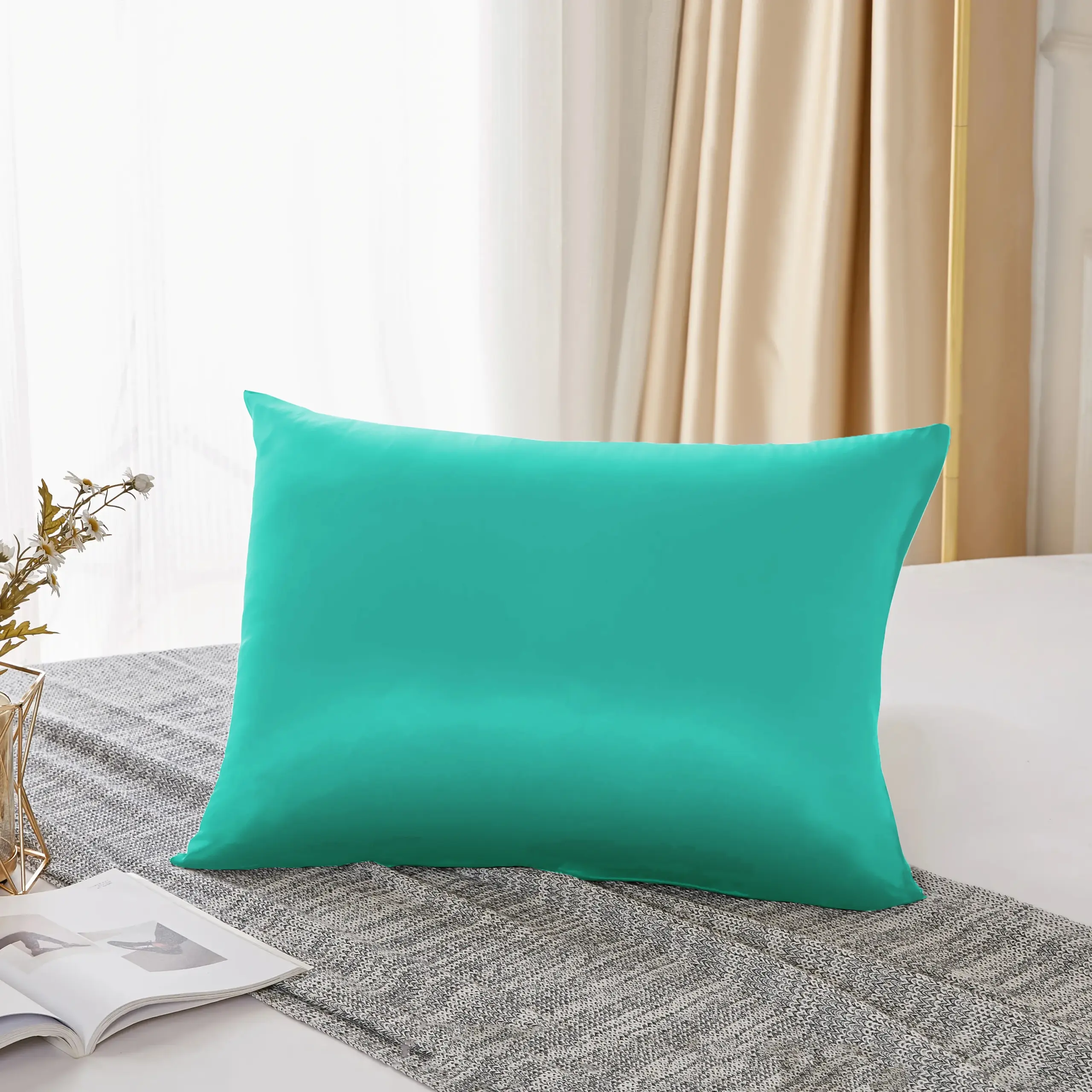
6. Organic Silk: Chemical-Free Cultivation and Processing
Organic silk addresses the environmental impact of conventional sericulture by eliminating synthetic chemicals throughout the production process. This approach focuses on creating a high-quality product while minimizing ecological harm.
The foundation of organic silk production lies in sustainable mulberry cultivation:
* Natural fertilizers like compost and manure replace synthetic options
* Biological pest control methods and companion planting eliminate chemical pesticides
* Crop rotation and soil conservation practices maintain long-term field health
* Water conservation techniques reduce irrigation needs
During processing, organic silk producers use natural alternatives to harsh chemicals:
* Traditional plant-based degumming agents such as soap nuts or enzyme solutions
* Natural mordants like alum, iron, or tannin to prepare fibers for dyeing
* Plant-derived dyes from sources like indigo, madder root, walnut hulls, and marigold
* Mechanical finishing techniques rather than chemical treatments
These practices benefit the broader ecosystem by preventing chemical runoff into waterways, preserving soil health, and reducing worker exposure to potentially harmful substances. While yields may be somewhat lower than conventional methods, the quality of the silk remains exceptional, with some consumers reporting increased durability and more vibrant, complex colors from natural dyes.
Certification standards like the Global Organic Textile Standard (GOTS) provide verification of organic practices throughout the supply chain, from mulberry farm to finished product. For those wondering why choose mulberry silk sheets, organic options offer the luxury experience with additional environmental benefits.
7. Recycled and Regenerated Silk: Circular Economy Solutions
The circular economy approach to silk production focuses on maximizing resource efficiency by keeping materials in use for as long as possible. Recycled and regenerated silk represents an innovative solution to textile waste while creating beautiful fabrics with minimal new resource extraction.
Silk waste comes from several sources throughout the production chain:
* Pre-consumer waste includes silk noils (short fibers separated during processing), damaged cocoons, and manufacturing scraps
* Post-consumer sources include used silk garments, home textiles, and industrial silk products
The recycling process typically begins with sorting silk materials by color and quality. The fibers are then cleaned, mechanically broken down, and re-spun into new yarn. This yarn may be used pure or blended with virgin silk or other fibers to enhance strength and performance characteristics.
The environmental benefits are significant—recycled silk requires no additional land, water, or energy for silkworm rearing and mulberry cultivation. It also diverts textiles from landfills, where natural fibers like silk still contribute to methane emissions during decomposition.
The quality of recycled silk varies depending on the input materials and processing techniques. While it may not have the perfect consistency of virgin silk, many consumers appreciate the unique character and reduced environmental footprint of recycled options. The textile industry continues to improve low-impact silk production methods like these to meet growing demand for sustainable luxury.
8. Wild Silk Varieties: Tussar, Eri, and Muga
Beyond cultivated mulberry silk, several wild silk varieties offer unique characteristics and sustainability advantages. These silks come from silkworms that live in forest habitats rather than controlled environments, resulting in distinctive textures and colors.
| Wild Silk Type | Source | Characteristics | Sustainability Aspects |
|---|---|---|---|
| Tussar (Tussah) | Antheraea mylitta moth | Golden color, coarser texture, more durability | Semi-wild rearing, minimal human intervention |
| Eri | Philosamia ricini moth | White/off-white, wool-like softness, thermal properties | Non-violent harvesting (moths emerge naturally) |
| Muga | Antheraea assamensis moth | Golden-yellow sheen, extremely durable | Protected geographical indication, traditional methods |
Wild silk production generally involves less environmental manipulation than conventional sericulture. The silkworms feed on a variety of host trees in their natural habitat, including oak, castor, and som trees, depending on the species. This diversity promotes healthier forest ecosystems compared to monoculture mulberry plantations.
Eri silk deserves special mention for its ethical production. Like Peace Silk, Eri cocoons are harvested only after the moths have emerged naturally, making it a cruelty-free option sometimes called “peace silk of the wild.” This characteristic has earned it the nickname “ahimsa silk” in some regions.
These unique wild varieties often support traditional communities with generational knowledge of sustainable harvesting techniques. Their production typically involves fewer chemicals and lower resource consumption than conventional silk.
For those interested in the characteristics and benefits of different silk varieties, exploring mulberry silk sheets alongside these wild alternatives provides an interesting comparison of texture and performance.
9. Innovative Sustainable Practices in Modern Silk Production
The silk industry is embracing innovation to address environmental challenges while maintaining the exceptional qualities that make silk desirable. These advancements combine traditional knowledge with modern technology to create more sustainable production systems.
Regenerative Agriculture for Mulberry Cultivation
* Agroforestry systems combining mulberry trees with complementary crops
* Cover cropping and minimal tillage to enhance soil health
* Integrated pest management reducing or eliminating chemical interventions
* Carbon sequestration through improved soil management practices
Water Conservation Technologies
* Closed-loop water recycling systems recovering up to 90% of processing water
* Drip irrigation and moisture monitoring for efficient mulberry cultivation
* Rainwater harvesting for production facilities
* Biological water treatment using constructed wetlands
Energy Efficiency Innovations
* Solar-powered reeling and spinning equipment
* Heat recovery systems for cocoon drying processes
* Energy-efficient temperature control in silkworm rearing facilities
* Low-temperature enzymatic degumming reducing energy requirements
Advanced Dyeing and Finishing
* Waterless dyeing technologies using CO₂ or air
* Digital printing reducing water and chemical consumption
* Plant-based dye development with improved colorfastness
* Zero-discharge finishing processes eliminating wastewater
Waste Valorization
* Conversion of silkworm waste into agricultural fertilizer
* Utilization of sericin (silk protein removed during degumming) for cosmetics and biomaterials
* Mulberry fruit harvesting for food products alongside silk production
* Composting and biogas generation from production residues
These sustainable practices are being implemented by forward-thinking producers who recognize that the complete guide to mulberry silk bed sheets must include information about production methods to satisfy increasingly eco-conscious consumers.
10. Plant-Based Silk Alternatives: Vegan Options
For those seeking the luxurious feel and performance of silk without any animal involvement, an expanding array of plant-based alternatives offers compelling options. These innovative materials mimic silk’s prized characteristics while being entirely vegan.
Lyocell/Tencel: Derived from sustainably harvested wood pulp, this cellulosic fiber undergoes closed-loop processing with nearly 100% solvent recovery. The resulting fabric offers silk-like drape, breathability, and temperature regulation with exceptional moisture management properties.
Bamboo Silk: Created from bamboo cellulose, this material combines silk-like softness with bamboo’s rapid renewability. The best versions use environmentally responsible closed-loop processing rather than chemical-intensive viscose methods.
Orange Fiber: Ingeniously crafted from citrus juice byproducts, this Italian innovation transforms waste from the food industry into smooth, lightweight fabrics with silk-like qualities. The process utilizes material that would otherwise be discarded, creating value from waste.
Banana Silk: Made from fibers extracted from banana plant stems (agricultural waste after fruit harvesting), this material offers a unique texture with a natural sheen. Its production requires minimal water and no additional land use since it utilizes existing agricultural byproducts.
Other Promising Innovations:
* Lotus silk from lotus stem fibers
* Soy silk derived from tofu manufacturing byproducts
* Cactus silk extracted from desert-adapted plants
* Ramie, one of the oldest fiber crops with silk-like properties when properly processed
These plant-based alternatives generally have lower environmental footprints than conventional silk, though processing methods vary in their sustainability. The best options use minimal chemicals, closed-loop systems, and waste materials as their starting point.
For those interested in experiencing these innovative textiles, bamboo silk sheets offer an excellent entry point to plant-based luxury with similar benefits to traditional silk.
100% Silk Sheets, Green Silk Sheets, King Size Silk Bedding Set, Mulberry Silk Bedding Sets, Queen Size Silk Bedding Set
Price range: $1,246.21 through $1,615.22 Select options This product has multiple variants. The options may be chosen on the product pageEucalyptus Silk Bedding Sets, Eucalyptus Silk Sheets
Price range: $360.24 through $393.60 Select options This product has multiple variants. The options may be chosen on the product page- Price range: $267.82 through $306.55 Select options This product has multiple variants. The options may be chosen on the product page
Bamboo Silk Sheets, Cooling Silk Sheets
Price range: $130.76 through $177.80 Select options This product has multiple variants. The options may be chosen on the product page100% Silk Sheets, King Size Silk Bedding Set, Mulberry Silk Bedding Sets, Queen Size Silk Bedding Set, White Silk Sheets
Price range: $1,000.79 through $1,351.42 Select options This product has multiple variants. The options may be chosen on the product pageBamboo Silk Sheets, Queen Size Silk Fitted Sheet
Price range: $230.24 through $297.88 Select options This product has multiple variants. The options may be chosen on the product page
11. Lab-Grown and Bioengineered Silk: The Future of Sustainable Luxury
Perhaps the most revolutionary development in sustainable silk production comes from laboratories rather than fields or factories. Bioengineered silk represents the intersection of ancient luxury and cutting-edge biotechnology, with the potential to transform the industry’s environmental footprint.
This innovative approach uses microorganisms—typically specially modified yeast, bacteria, or other cells—to produce silk proteins through fermentation processes. Scientists have decoded the genetic sequences that enable silkworms to create their remarkable fibers and transferred these capabilities to microorganisms that can produce the same proteins without any animal involvement.
The process typically involves:
1. Engineering microorganisms with silk-producing genes
2. Fermenting these organisms in controlled conditions using simple sugars as food
3. Harvesting the resulting silk proteins
4. Processing these proteins into fibers through spinning techniques
The environmental advantages are substantial: lab-grown silk requires no mulberry cultivation, significantly less water, reduced land use, and controlled production without seasonal limitations. Additionally, the properties of the silk can be fine-tuned at the molecular level, potentially creating fibers that exceed natural silk’s performance for specific applications.
Several pioneering companies have already commercialized limited quantities of bioengineered silk, though primarily for specialized applications rather than fashion or home textiles. Current challenges include scaling production to commercial volumes and reducing costs to competitive levels.
As this technology matures, it may provide the ultimate solution to silk’s sustainability challenges—delivering the luxury and performance consumers desire with a minimal environmental footprint. Complementing this innovation, eucalyptus silk sheets represent another forward-thinking approach to sustainable luxury bedding.
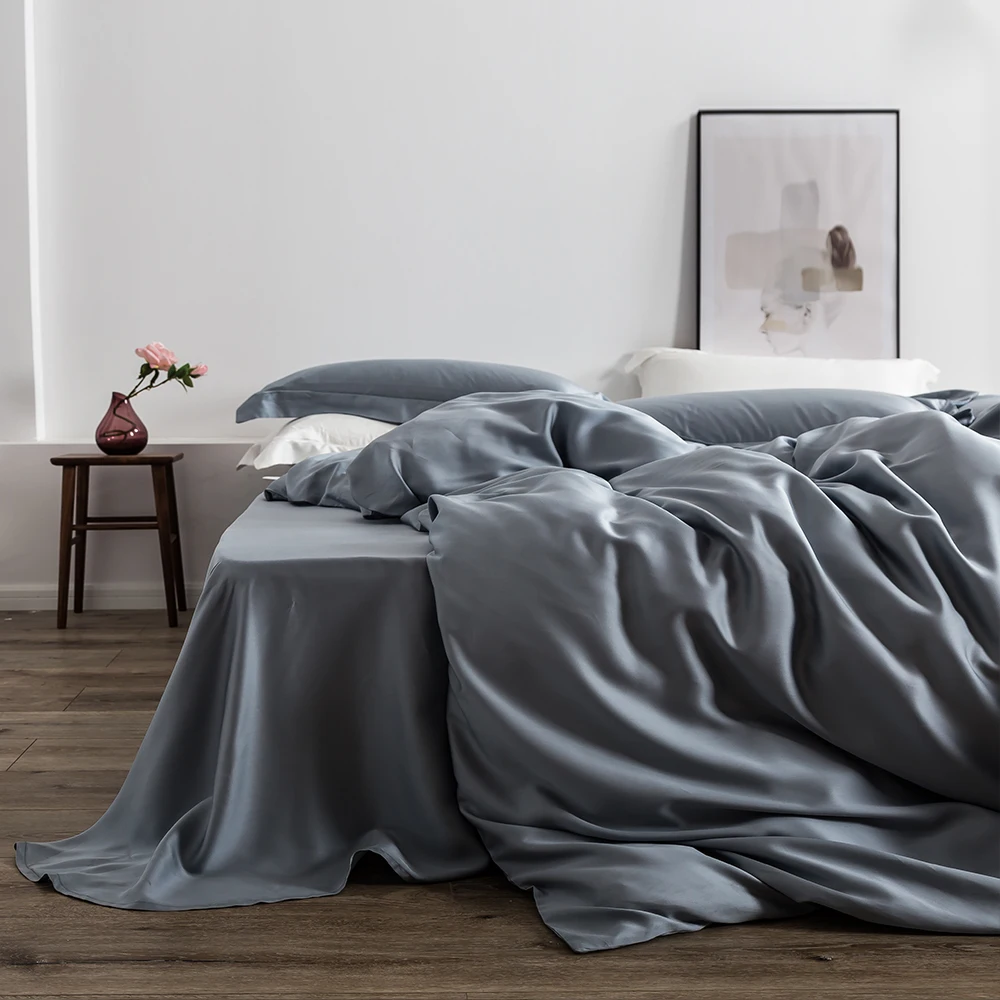
12. Certifications and Standards: Identifying Truly Sustainable Silk
With various sustainability claims in the marketplace, third-party certifications provide valuable verification to help consumers identify genuinely eco-friendly and ethical silk products. These standards establish clear criteria and verification processes that go beyond marketing claims.
Key Certifications for Sustainable Silk:
Global Organic Textile Standard (GOTS): The gold standard for organic textiles, covering environmental and social criteria throughout the entire textile supply chain. Requires at least 70% organic fibers and restricts chemicals in processing.
OEKO-TEX Standard 100: Focuses on ensuring textiles are free from harmful substances. While not specifically addressing production methods, it guarantees the final product is safe for human use.
Cradle to Cradle Certified: Evaluates products across five categories: material health, material reuse, renewable energy use, water stewardship, and social fairness. Particularly valuable for its comprehensive lifecycle approach.
Peace Silk/Ahimsa Certification: Verifies silk has been produced without killing silkworms, though standards vary between certifying bodies.
Fair Trade Textile Standard: Focuses on working conditions, wages, and workers’ rights throughout the textile supply chain.
When shopping for sustainable silk, look beyond vague terms like “eco-friendly” or “natural” and seek specific information about production methods and third-party verification. Don’t hesitate to ask retailers about their supply chain transparency, certification documentation, and specific sustainability practices.
The most trustworthy brands will readily provide detailed information about their sourcing and production methods. Sanctuary Soft’s luxury silk bedding sets represent this commitment to transparency and verified sustainability.
13. Comparing Conventional vs. Eco-Friendly Silk: Performance and Care
Many consumers wonder whether choosing sustainable silk means compromising on quality or changing how they care for their silk items. This comparison helps clarify the performance differences between conventional and various eco-friendly options.
| Characteristic | Conventional Silk | Peace/Ahimsa Silk | Organic Silk | Recycled Silk | Plant-Based Alternatives |
|---|---|---|---|---|---|
| Appearance | Smooth, uniform, high shine | Slightly more textured, natural variations | Similar to conventional, potentially less uniform | More textured, sometimes slubbed | Varies by type, generally smooth with moderate shine |
| Feel | Exceptionally soft, cool to touch | Soft with more texture | Similar to conventional | Varies with source material | Range from very silk-like (Tencel) to more distinct (banana silk) |
| Durability | Very durable with proper care | Slightly less durable due to shorter fibers | Similar to conventional | Can be less durable, depending on processing | Varies widely by material and processing |
| Care Requirements | Gentle washing, protect from sunlight | Similar to conventional | Similar to conventional, may retain color better | Similar to conventional | Often easier to care for than true silk |
| Environmental Impact | High water use, chemical processing | Lower impact, non-violent | Reduced chemicals, water use varies | Minimal new resource use | Generally lower water, land use, and chemicals |
| Price Point | Varies by quality | 20-50% higher than conventional | 10-30% higher than conventional | Similar or slightly less than conventional | Typically 10-30% less than premium silk |
In terms of care, most eco-friendly silks can be maintained similarly to conventional silk—hand washing or delicate machine cycles with gentle detergent, avoiding prolonged sun exposure, and storing properly to prevent moisture damage and creasing. Some plant-based alternatives may actually offer easier care, with improved washability and wrinkle resistance.
Many consumers report that properly produced sustainable silk options maintain the key benefits that make silk desirable, including its temperature-regulating properties, moisture-wicking capability, and skin-friendly nature. Understanding what makes mulberry silk special helps consumers recognize these qualities across different production methods.
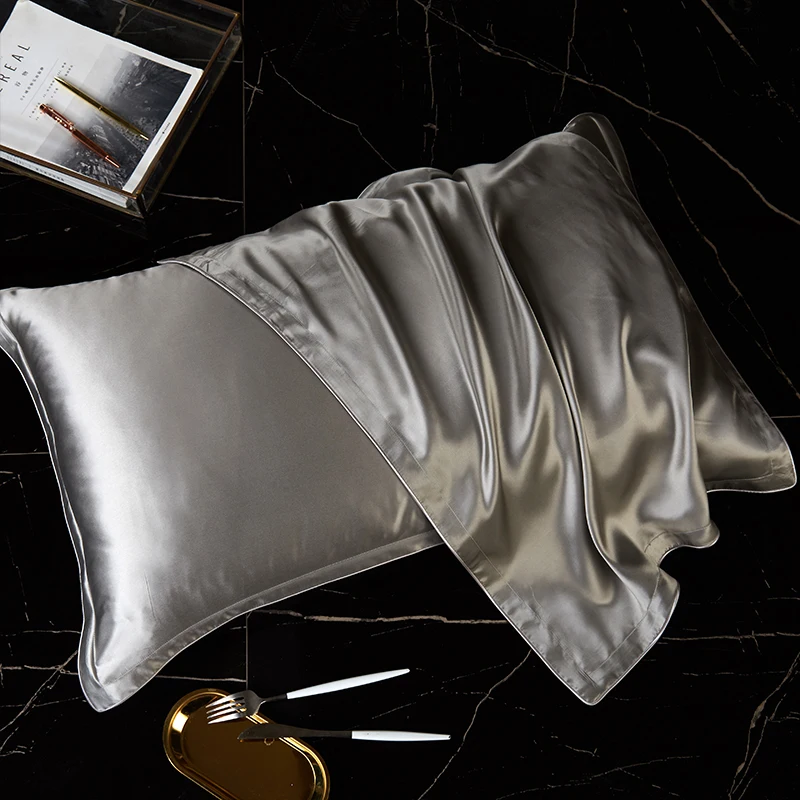
14. How Can I Support Sustainable Silk Production?
Individual consumers have significant power to influence the silk industry toward more sustainable practices. Here are practical steps you can take to support eco-friendly silk production:
Research brand commitments before purchasing. Look for detailed information about sourcing, production methods, and environmental initiatives rather than vague “green” claims.
Prioritize certified products with third-party verification from respected organizations like GOTS, Fair Trade, or Oeko-Tex.
Support artisanal producers using traditional, sustainable methods that have evolved over generations to work with local ecosystems.
Extend product lifespan through proper care—gentle washing, appropriate storage, and prompt repairs when needed.
Choose quality over quantity by investing in fewer, higher-quality pieces that will last longer rather than frequently replacing lower-quality items.
Consider secondhand options from consignment stores or vintage shops to give existing silk items a second life.
Ask questions about production methods when shopping. Consumer inquiries signal to retailers that sustainability matters to their customers.
Repurpose old silk items rather than discarding them—silk scarves can become pillow covers, and damaged garments can provide fabric for smaller projects.
By making thoughtful choices and learning more about eco-friendly alternatives to silk, consumers can enjoy luxury textiles while supporting positive changes in the industry.
15. Is Conventional Silk Production Always Harmful to the Environment?
The environmental impact of conventional silk production exists on a spectrum rather than as a simple “harmful” or “harmless” classification. Multiple factors influence just how sustainable any particular silk product might be, including regional practices, scale of production, and specific processing methods.
Some conventional silk producers have implemented significant improvements while maintaining traditional production frameworks. These include water recycling systems, energy efficiency measures, and reduced chemical usage. In regions with long sericulture histories, traditional knowledge often incorporates sustainable elements that modern industrial production might overlook.
The environmental footprint also varies substantially between production regions. Areas with naturally suitable climates for silkworm rearing require less energy for climate control. Similarly, regions with abundant rainfall may have lower irrigation demands for mulberry cultivation.
Scale matters significantly as well. Small-scale artisanal production often has lower environmental intensity per unit than large industrial operations, though it may lack access to some efficiency-improving technologies.
While conventional silk production does have inherent environmental challenges, producers across the spectrum are increasingly implementing improvements. The most responsible conventional producers may have less environmental impact than poorly managed operations claiming to be “eco-friendly” without substantive practices.
For consumers interested in both luxury and sustainability, understanding these nuances helps make informed choices about mulberry silk bedding skin benefits and environmental considerations.
16. Can Eco-Friendly Silk Be as Luxurious as Conventional Silk?
The question of luxury quality in sustainable silk options concerns many potential buyers. The good news is that eco-friendly silk can absolutely achieve the luxurious feel and appearance that makes silk so desirable, though with some distinctive characteristics worth understanding.
Peace silk offers a slightly different texture than conventional silk—one that many consumers actually prefer once they experience it. The natural variations and softer hand feel provide a unique character that mass-produced conventional silk sometimes lacks. Though the shorter fibers result in a slightly less shiny appearance, the ethical production method adds intangible value for conscientious consumers.
Organic silk, when well-produced, is virtually indistinguishable from conventional silk in appearance and feel. Some experts even suggest that the absence of harsh chemicals during processing can result in a more supple texture and better color depth when natural dyes are used.
Plant-based alternatives continue to improve dramatically with each generation of innovation. Materials like premium Tencel and certain bamboo silks now closely mimic true silk’s drape and feel while offering practical advantages like improved washability.
Luxury fashion houses and premium bedding companies increasingly incorporate sustainable silk options in their high-end lines, demonstrating confidence in their quality and appeal. This mainstream luxury adoption has helped refine eco-friendly silk production to meet exacting standards.
For those considering sustainable options, Sanctuary Soft offers premium silk pillowcases that demonstrate how eco-conscious production can achieve truly luxurious results.
17. What’s Next for Sustainable Silk? Future Innovations
The future of sustainable silk production promises exciting developments that could transform how we think about this luxury fiber. Ongoing innovation focuses on addressing remaining challenges while further reducing environmental impact.
Biomimicry continues to influence textile development, with researchers studying the silkworm’s efficient protein production and spinning processes to create even more resource-efficient manufacturing methods. Some labs are developing silkworm feed alternatives that require less land and water than mulberry cultivation.
Advanced biotechnology approaches are progressing rapidly. Beyond current lab-grown silk proteins, researchers are exploring customizable properties like enhanced strength, improved elasticity, or even novel functionalities like natural antimicrobial properties engineered at the molecular level.
Circular design principles are being integrated throughout the industry, with more companies developing systems to reclaim and regenerate silk fibers from post-consumer products. New mechanical and chemical recycling methods promise to maintain higher quality in recycled silk.
Manufacturing technology improvements focus on reducing energy and water intensity. Waterless dyeing technologies and advanced degumming processes using enzymes or even ultrasonic methods could dramatically decrease resource requirements.
Industry collaborations and transparency initiatives are growing, with more brands sharing their sustainability data and collaborating on industry-wide improvements rather than treating sustainability as a competitive advantage.
These innovations point toward a future where silk’s luxury status comes not just from its inherent properties but also from its sustainability credentials. For consumers interested in experiencing the cutting edge of sustainable luxury, exploring 100% silk sheets from forward-thinking producers offers a glimpse of this promising future.

